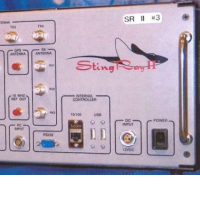After Months of Denial, Sacramento Sheriff Admits Using Stingray Cellphone Surveillance

Bound my nondisclosure agreements and motivated by institutional sneakiness, law enforcement agencies across the country are secretly deploying new technology to track people’s cellphones without court oversight.
When the Sacramento County Sheriff’s Office was identified by the media months ago as one of the agencies using Stingrays to spy on residents, they refused to comment. But last week they came clean. Or at least tried to spiff up their image.
Sheriff Scott Jones put out a press release admitting for the first time that the department “currently possesses and utilizes such a device, which is a cell-site simulator.” He blamed false reports in the media for forcing his hand and warned that revealing too many details about Stingray would reduce public safety.
The technology “could be rendered ineffective if criminals and adversaries used such details to diminish or defeat the department’s lawful responsibilities.”
Stingray is expensive hardware made by Harris Corporation that can be deployed in an area where the authorities are trying to track an individual. It pretends that it is a cell tower and fools wireless phones into establishing a connection. Once connected, it can determine cell location and download information of people who are not suspects in an investigation, raising all sorts of privacy issues.
Harris and the federal government, which provides Homeland Security grants to local law enforcement for purchasing Stingrays, require police departments to sign nondisclosure agreements that they are using the technology, making court oversight problematic and police chiefs evasive about spying on the public.
An investigation earlier this year by USA Today, The Desert Sun in Southern California and other Gannett newspapers of 125 police agencies in 33 states discovered that at least 25 own a Stingray.
A map published by the American Civil Liberties Union (ACLU) shows the known locations nationally of where agencies are using Stingray technology. The ACLU said the map “dramatically under-represents” use of the secret surveillance equipment.
The Sacramento Sheriff’s Department came under scrutiny when it was identified in a federal grant application by the San Jose Police Department as one of the agencies consulted about the technology. KTVU Sacramento then proceeded to do a multi-part series of stories about Stingray, eliciting multiple official denials and evasions.
Sheriff Jones said the device was only used “to locate felony suspects and/or missing or kidnapped persons” and denied the department was collecting and retaining voice, text or “ANY” data using the technology.
Local law enforcement surveillance systems, often juiced with federal grant money, are just beginning to get some of the attention devoted to the domestic spying activities of the National Security Agency (NSA). Then again, they haven’t been caught hacking into U.S. Senate computers to steal documents.
–Ken Broder
To Learn More:
Sacramento Sheriff Acknowledges Possession, Use of Cell Phone Surveillance Technology (by Kim Minugh, Sacramento Bee)
California Sheriff's Office Admits to Cell-Phone Spying (by Michael Bott, KXTV Sacramento)
Cellphone Data Spying: It's Not Just the NSA (USA Today)
Local Cops Throughout the State Use Anti-Terrorism Stingrays to Track Cellphone Users (by Ken Broder, AllGov California)
- Top Stories
- Controversies
- Where is the Money Going?
- California and the Nation
- Appointments and Resignations
- Unusual News
- Latest News
- California Forbids U.S. Immigration Agents from Pretending to be Police
- California Lawmakers Urged to Strip “Self-Dealing” Tax Board of Its Duties
- Big Oil’s Grip on California
- Santa Cruz Police See Homeland Security Betrayal in Use of Gang Roundup as Cover for Immigration Raid
- Oil Companies Face Deadline to Stop Polluting California Groundwater





